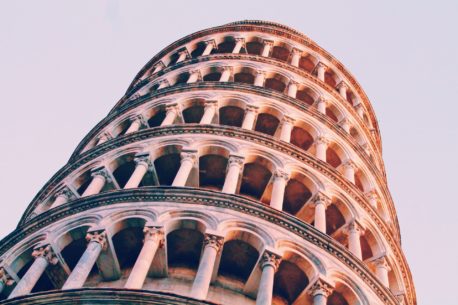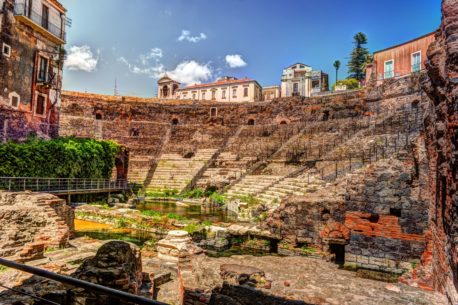
Florence, the world capital of the Renaissance, has its first record of Jews living within its boundaries dating back to the XII century. The peak of the Jewish presence was obviously reached in the XIV and XV centuries, centuries that saw the blossoming and the height of the Renaissance period, even though the ruling family of the Medici had never been particularly friendly towards the Jews, actually quite the opposite.
Our tour of Jewish Florence will start from Piazza della Repubblica that used to be the centre of the old ghetto before it was demolished in the middle of the XIX century to give way to a remodelling of the whole area in anticipation of Florence becoming Italy’s second capital city after Turin in the immediate aftermath of the reunification of the Italian peninsula in 1861 and before Rome became the final capital city in 1870.
To find remains and artifacts from the ghetto we will have to take a walk through one of the most beautiful areas of Florence to reach nearby Museo San Marco. Here all items and relics worth of any significance were collected and put on display after this area’s demolition was completed. On the way to the Museum we will pass by sites linked to local Jewish history, including those of two old synagogues, one Italian and one Levantine, used until 1962 by those Jews who refused to move out of this area when the main synagogue was completed in 1882 and most of the Jewish population moved nearby its quarters.
The tour will then take us to our last site, the Synagogue completed in 1882, a splendid architectural example of the period of Jewish emancipation with its monumental aspect and lavish decorations as to symbolise the long awaited access of the Jewish population into the Italian social and civic mainstream. Inside the synagogue it also will be possible to visit the Jewish Museum, where the long and rich history of the Florentine Jews is on display.

The Jewish community of Pisa is most probably the oldest in Tuscany, and one of the oldest in Italy, having settled down in the city in the year 850 AD. Interesting is the description given in the XIII century of the city and its local Jewish population by the famous Spanish Jewish explorer and geographer […]

This city, laying on one side along the Ionian sea and the other side at the bottom of the Etna vulcano, the highest active vulcano in Europe, has, in the midst of its beautifull historic down town area also a “Giudecca” (easy to understand the ethimological origin of this word), as the ghetto areas were […]